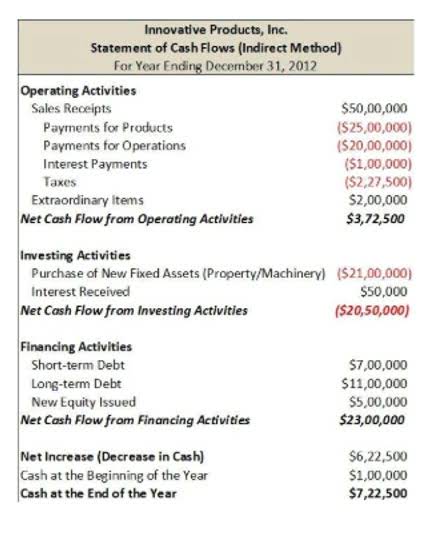
The times interest earned (TIE) formula was developed to help lenders qualify new borrowers based on the debts they’ve already accumulated. It gave the investors an idea of shareholder’s equity metric and interest accumulated to decide if they could fund them further. Companies may use earnings to pay dividends to shareholders, or retain earnings to fund business operations. Ideally, a business should generate enough earnings to pay for interest expenses and to fund other needs. The times interest earned ratio shows how many times a company can pay off its debt charges with its earnings.
- Based on this TIE ratio — hovering near the danger zone — lending to Dill With It would probably not be deemed an acceptable risk for the loan office.
- A benchmarking analysis involves comparing a company’s TIE ratio with the industry average to determine its relative performance.
- SurveySparrow’s Profit & Loss Statement template is a free and customizable tool that you can use to calculate the profit or loss incurred by your business in a financial year.
- To give you an example – businesses that sell utility products regularly make money as their customers want their product.
- Lower values highlight that the company may not be in a position to meet its debt obligations.
- A company’s ability to pay all interest expense on its debt obligations is likely when it has a high times interest earned ratio.
- For example, this would be the case if a company is financed entirely through equity, as most early ventures or growth stage companies are.
Why is TIE important for a business?
But even a genius CEO can be a tad overzealous and watch as compound interest capsizes their boat. When corporate interest rates rise, this may result in a decline in a company’s interest coverage ratio. Rising rates limit profits and hurt a company’s ability to borrow, invest, and hire new employees. Businesses can increase EBIT by reviewing business operations in order to increase profit margins. Banks, for example, have to build and staff physical bank locations and make large investments in IT.
Applications of TIE in Decision-Making

Tracking interest expense is vital for assessing a company’s ability to manage its debt load effectively. As mentioned, TIE is a sort of a test for a company’s ability to meet its debt obligations. It does so by indicating whether a company can comfortably pay off its interest obligations from its operational income. The Times Interest Earned Ratio (TIER) compares a company’s income to its interest payments. In other words, it helps answer the question of whether the company generates enough cash to pay off its debt obligations. A company’s TIE ratio not only affects immediate financing decisions but also serves as an indicator of its long-term sustainability.

Income Statement Assumptions

For example, let’s say that the Times Interest Earned ratio is 3; that’s an acceptable risk for the investors. Businesses that have a times interest earned ratio of less than 2.5 are considered to be financially https://www.bookstime.com/articles/is-unearned-revenue-a-current-liability unstable. If your business has debt and you are looking to take on more debt, the interest coverage ratio will give your potential lenders an understanding of how risky a business you are.

While 4.16 times is still a good TIE ratio, it’s a tremendous drop from the previous year. While Harold may still be able to obtain a loan based on the 2019 TIE ratio, when the two years are looked at together, chances are that many lenders will decline to fund his hardware store. If you’re reporting a net loss, your times interest earned ratio would be negative as well. However, if you have a net loss, the times interest earned ratio is probably not the best ratio to calculate for your business. Because this number indicates the ability of your business to pay interest expense, lenders, in particular, pay close attention to this number when deciding whether to provide a loan to your business.
Why Calculate TIE Ratio
If you are a small business with a limited amount of debt, then the ratio is not all that important. There’s no strict criteria for what makes a “good” Times Interest Earned Ratio. When banks are underwriting new debt issuances for LBO targets, this is often benchmark they strive for. Less aggressive underwriting might call for ratio levels of 3.0x or greater. Discrepancies in the TIE ratio across industries can arise due to varying capital structures, interest rates, and the inherent volatility of specific sectors. Conversely, a low TIE ratio might necessitate a reliance on funding with less financial leverage to mitigate the risk of default.
- Tracking interest expense is vital for assessing a company’s ability to manage its debt load effectively.
- Conversely, a TIE ratio below 1 suggests that a company cannot meet its interest obligations from its operating income alone, which is a cause for concern.
- My analysis, research, and testing stems from 25 years of trading experience and my Certification with the International Federation of Technical Analysts.
- We strive to empower readers with the most factual and reliable climate finance information possible to help them make informed decisions.
Benchmarking this ratio against industry standards is essential, as acceptable levels can vary significantly from one industry to another. Moreover, it’s worth mentioning that interest coverage ratios might not include all financial obligations. You recently received applications from two FMCG companies, A & B, for 5-year financing. the times interest earned ratio provides an indication of Your segment head has asked you to do some preliminary ratio analysis to assess whether the companies’ financial strength is good enough to warrant a detailed cash flows based analysis. In general, it’s best to have a times interest earned ratio that demonstrates the company can earn multiple times its annual debt obligation.

Step-by-Step Calculation
To have a detailed view of your company’s total interest expense, here are other metrics to consider apart from times interest earned ratio. If you have a $10,000 line of credit with a 10 percent monthly interest rate, your current expected interest will be $1,000 this month. If you have another loan of $5,000 with a 5 percent monthly interest rate, you will owe $250 extra after the interest is processed. Spend management encompasses organization-wide spending, accounting for invoice (accounts payable) and non-invoice (T&E) spend.

